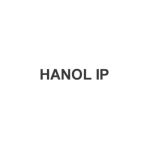The South Korean Intellectual Property High Court (the IP High Court) has recently rendered a decision dismissing the use of the ‘abuse of right defence’ in invalidation actions. In the decision, given the difference in nature between invalidation and infringement litigation, the court held that even when an invalidation trial is filed on the basis of a prior design right that itself would likely have been invalidated, this does not constitute an abuse of right (IP High Court Decision No. 2023Heo12831).
Korean precedents regarding the abuse of right defence
The abuse of right doctrine is a legal principle that prevents a right holder from exercising their rights in a way that is clearly unreasonable, unfair, or contrary to the purpose of the law.
In infringement cases involving patent or design rights, Korean courts have applied the abuse of right doctrine to restrict the enforcement of rights that are clearly invalid due to lack of inventiveness (for patents) or creativeness (for designs), as well as lack of novelty (Supreme Court Decision No. 2016Da219150, Supreme Court en banc Decision No. 2010Da95390).
Meanwhile, for patent scope confirmation trials, where a party seeks to confirm whether a certain product or process falls within the scope of a particular patent, the Korean Supreme Court has made two key rulings regarding the abuse of right doctrine:
Lack of novelty – the Supreme Court has held that the scope of a patent cannot be recognised under the abuse of right doctrine if the entire or part of the patented invention was publicly disclosed before the filing date of the patent application. This holds true even if there has been no separate invalidation decision based on lack of novelty (Supreme Court en banc Decision No. 81Hu56).
Lack of inventiveness – however, the court has been reluctant to accept abuse of right arguments when based on a patent’s lack of ‘inventiveness’, holding that the scope of a patent right should not be negated for lacking inventiveness in a scope confirmation trial (Supreme Court en banc Decision No. 2012Hu4162).
Analysis of the IP High Court’s decision
In the case in question, which was handed down on March 28 2024 and confirmed on April 13 2024 without an appeal to the Supreme Court, a registrant of a prior design right filed an invalidation action with the Intellectual Property Trial and Appeal Board (IPTAB) of the Korean Intellectual Property Office (KIPO) against a later design right on the ground that the later design lacked novelty over his own prior design. The IPTAB accepted this claim and determined that the later design right should be invalidated on the basis of lack of novelty.
The registrant of the later design right (the Plaintiff) filed an appeal to revoke the IPTAB’s invalidation decision with the IP High Court. The Plaintiff claimed that filing an invalidation action based on a prior design right that would obviously have been invalidated itself constituted an abuse of rights, and thus should not be allowed.
The IP High Court did not accept the Plaintiff’s claim and dismissed the appeal. The court based its ruling on the following:
Infringement litigation and invalidation actions are different in nature – in infringement litigation, the court judges the relationship of rights and obligations between the parties, and the decision takes effect only for those parties. However, in an invalidation action, the IPTAB and the court judge the validity of the IP right, and when the decision is confirmed, it has a general effect not only on the parties in dispute but also on third parties. Therefore, the abuse of right doctrine established in infringement litigation cannot directly apply to an invalidation action.
Claimant eligibility in an invalidation action is not limited to a right holder – in infringement litigation, only the right holder (the registrant or an exclusive licensee) can initiate such an action. However, in an invalidation action, the claimant is not required to be the right holder. That is, an invalidation trial can be filed by any party with an interest in the validity of the patent/design registration at issue or by an examiner of KIPO. Therefore, filing an invalidation action is not considered as enforcing a design right, and thus the abuse of right principle, which concerns whether the exercise of the right is allowable, cannot apply to invalidation proceedings.
A prior art design used for invalidating a design right does not have to be valid – in determining whether a design registration should be invalidated on the basis of lack of novelty under Article 33(1)(3) of the Design Protection Act, the prior art design for negating novelty does not necessarily have to be a ‘valid registration’. Therefore, it is difficult to consider that filing an invalidation action based on a prior design right that would be obviously invalidated would cause unreasonable harm or damage to the defendant.
Implications of the IP High Court’s decision
The IP High Court’s recent decision is significant in that it clarifies that the abuse of right defence, which has been recognised in Korean courts in infringement cases involving the exercise of IP rights, cannot be directly applied to invalidation actions.
In the case at hand, the fact is that the Plaintiff's design was destined for invalidation regardless of the validity of the defendant’s prior registered design. Its lack of novelty was evident, whether due to its similarity to the defendant’s design or to an even earlier, publicly disclosed design that could invalidate the defendant’s design itself.
Allowing the plaintiff to use the abuse of right defence to block the invalidation would have risked bringing about an imbalance between the parties, and be contrary to public policy by protecting a design that should be invalidated from being challenged.












